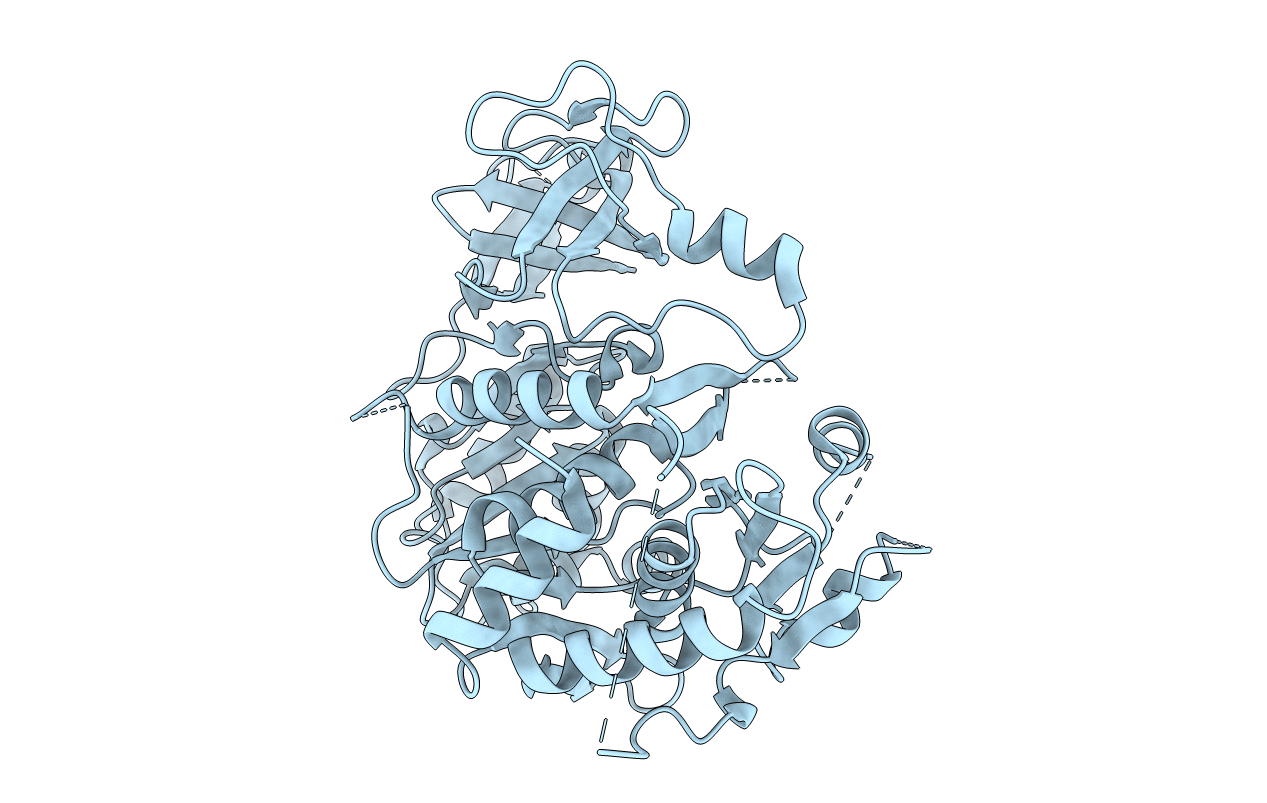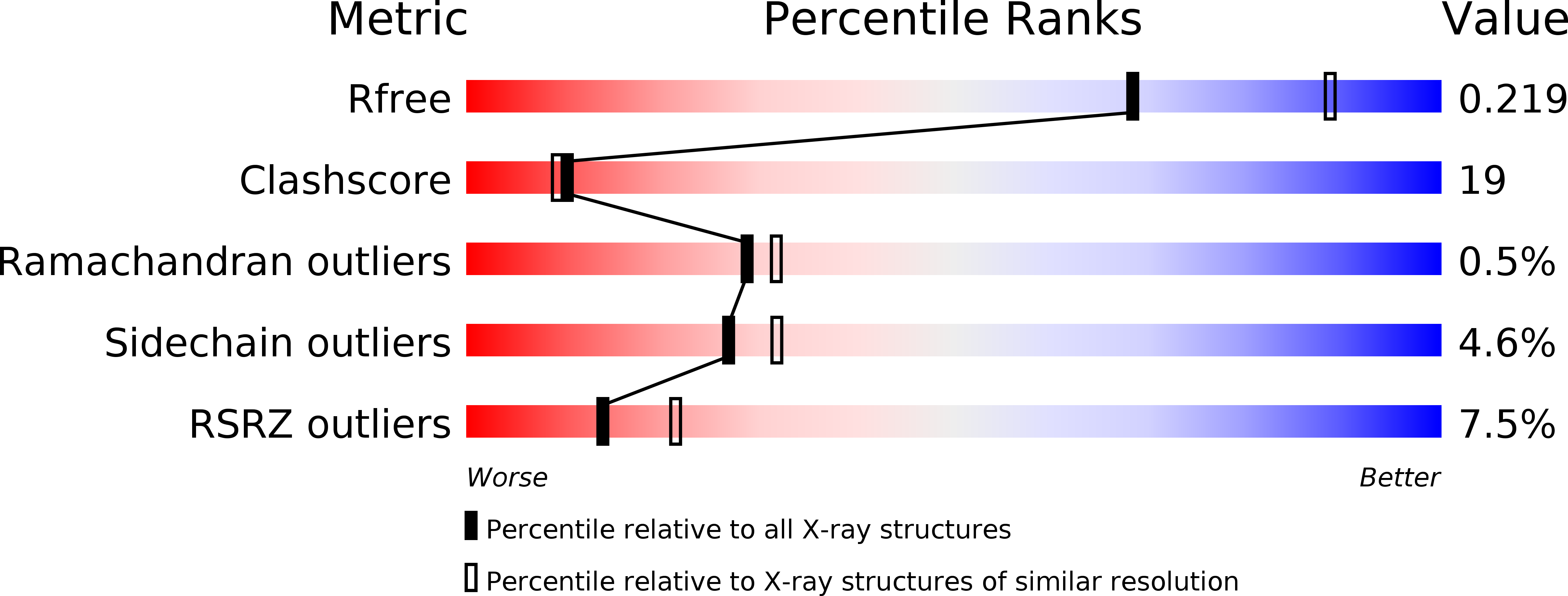
Deposition Date
2008-08-13
Release Date
2009-01-27
Last Version Date
2024-11-20
Entry Detail
PDB ID:
3E53
Keywords:
Title:
Crystal structure of N-terminal domain of a Fatty Acyl AMP Ligase FAAL28 from Mycobacterium tuberculosis
Biological Source:
Source Organism:
Mycobacterium tuberculosis (Taxon ID: 1773)
Host Organism:
Method Details:
Experimental Method:
Resolution:
2.35 Å
R-Value Free:
0.26
R-Value Work:
0.20
R-Value Observed:
0.20
Space Group:
P 21 21 21


